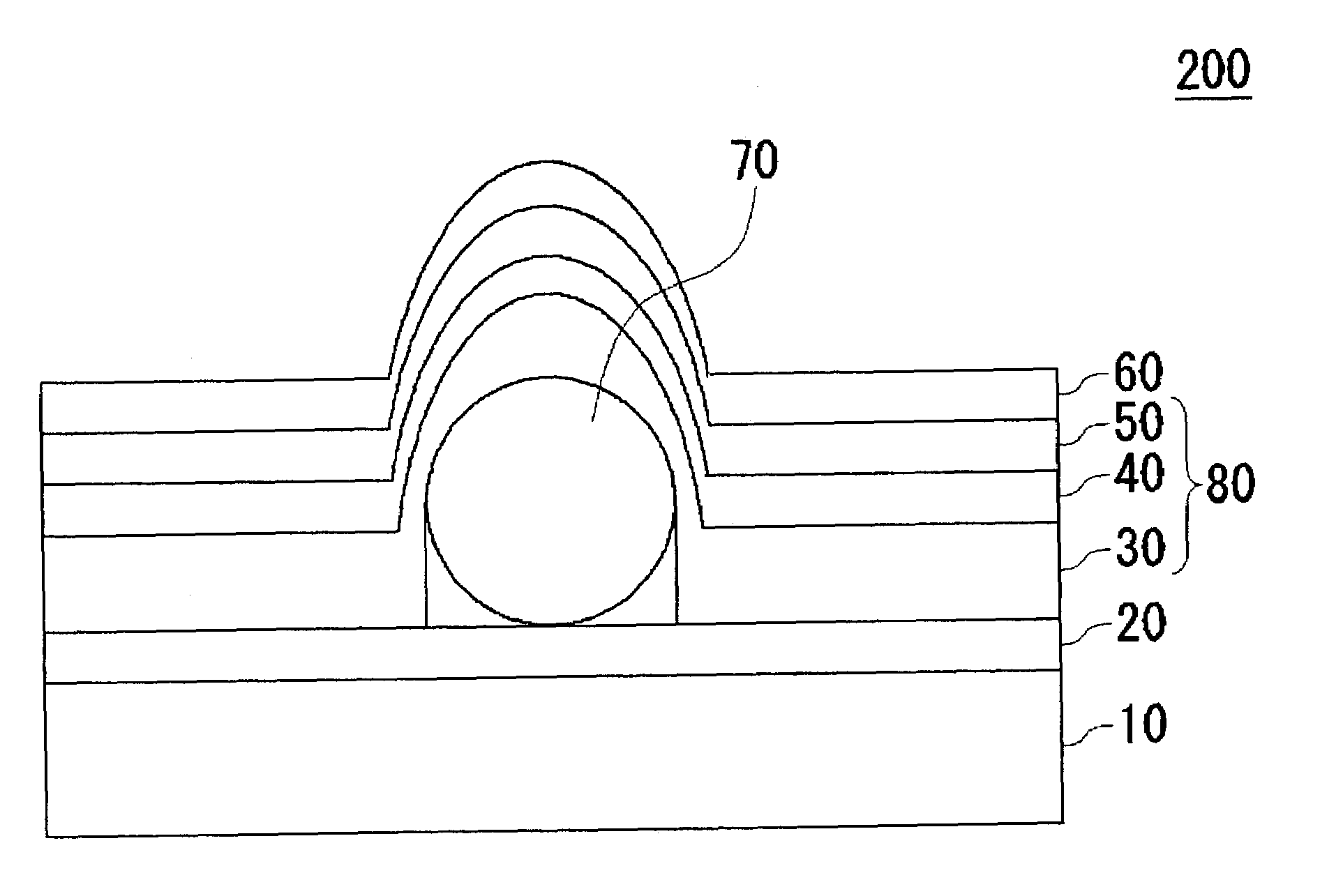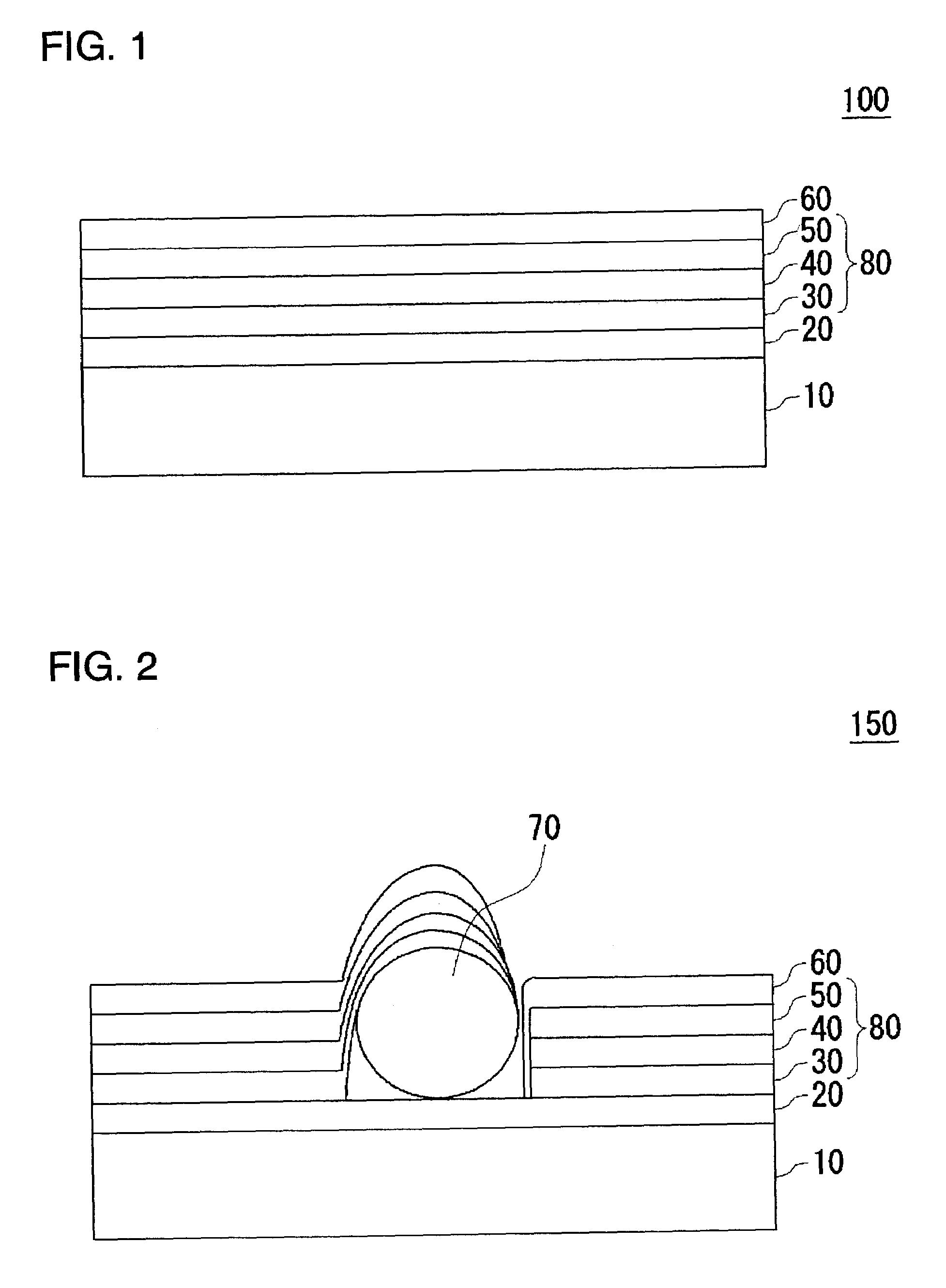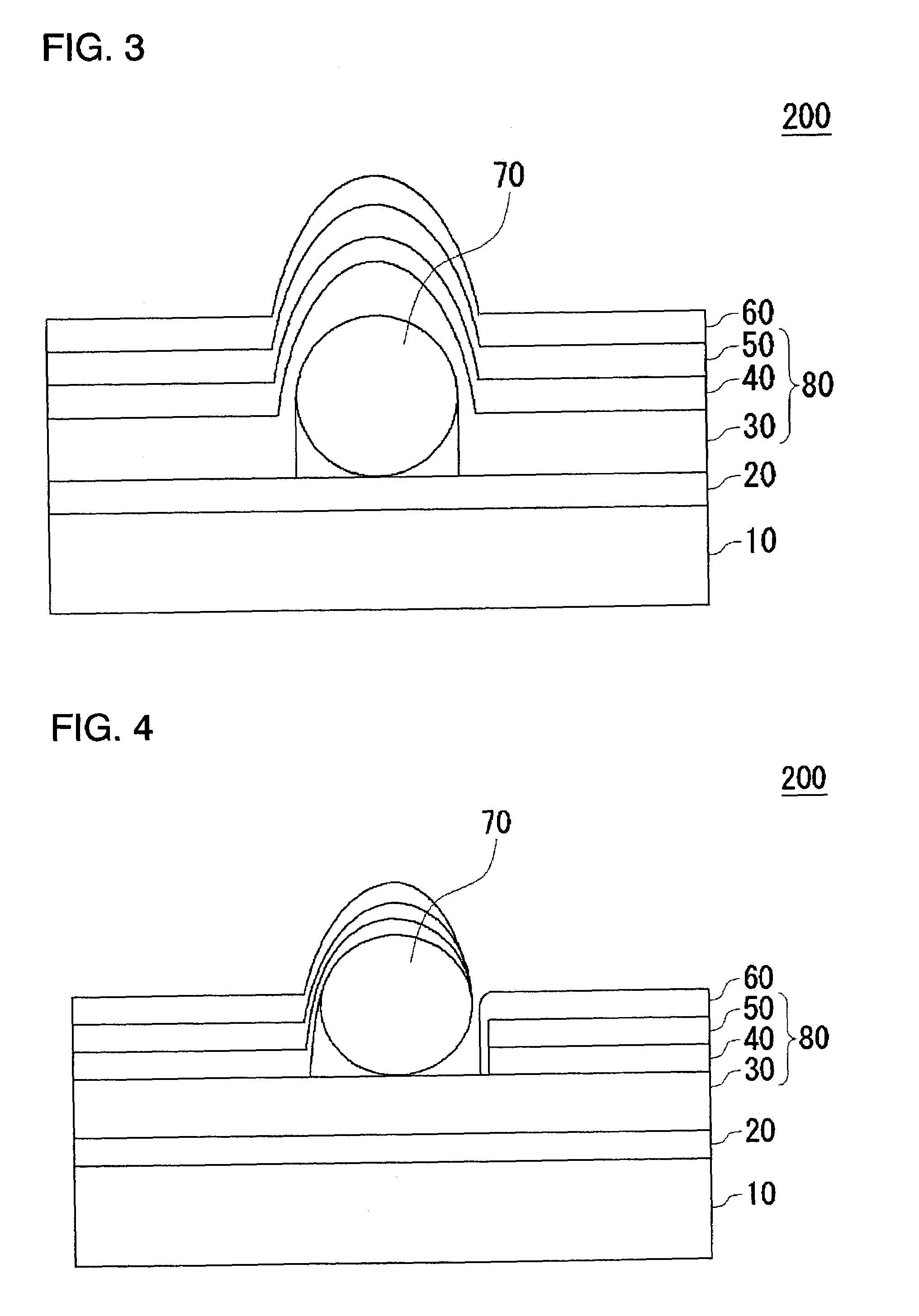Method of manufacturing an organic electroluminescent device and resulting device
- Summary
- Abstract
- Description
- Claims
- Application Information
AI Technical Summary
Benefits of technology
Problems solved by technology
Method used
Image
Examples
first embodiment
[0034]FIG. 3 schematically shows the sectional structure of an organic EL device according to a first embodiment of the present invention. In the present embodiment, the hole transporting layer 30 is increased in thickness so that the foreign particle 70 is substantially covered with the hole transporting layer 30.
[0035]A substrate 10 is made of an insulative substance such as glass. In the case of an active matrix type organic EL panel, for example, the substrate 10 has the structure in which driving circuits containing switching elements such as TFTs are formed on an insulative substrate, and a planarization film and the like are formed thereon. As employed in this specification, the substrate 10 shall also include such configuration as the driving circuits.
[0036]An anode layer 20 is formed on the substrate 10. The anode layer 20 is made of such material as indium tin oxide (ITO), tin oxide (SnO2), or indium oxide (In2O3). ITO is typically used because of its hole injection effici...
second embodiment
[0046]FIG. 8 schematically shows the sectional structure of an organic EL device according to a second embodiment. In the present embodiment, the electron transporting layer 50 is increased in thickness so that the foreign particle 70 is substantially covered with the electron transporting layer 50.
[0047]As shown in FIG. 8, even if the hole transporting layer 30 and the luminescent layer 40 fail to cover the foreign particle 70 adhering on the anode layer 20, the electron transporting layer 50 deposited thickly can substantially cover the foreign particle 70 to avoid electric contact between the anode and the cathode. Here, as with the thickness of the hole transporting layer 30 in the first embodiment, the thickness of the electron transporting layer 50 is desirably 1300 angstroms or above, and preferably 1700 angstroms or above. The upper limit to the thickness of the electron transporting layer 50 need only be designed not to have much effect on the characteristics of the organic...
third embodiment
[0048]FIG. 9 schematically shows the sectional structure of an organic EL device according to a third embodiment. The organic EL device of the present embodiment has the electrode layers at positions opposite from in the organic EL devices of the first and second embodiments. The substrate 10 is covered with the cathode layer 60, on which the electron transporting layer 50, the luminescent layer 40, the hole transporting layer 30, and the anode layer 20 are laminated in this order. As shown in FIG. 9, the electron transporting layer 50 lying immediately above the cathode layer 60 can substantially cover the foreign particle 70 adhering on the cathode layer 60, thereby preventing an interelectrode short and avoiding poor evaporation of the luminescent layer 40.
[0049]Here, as with the thickness of the hole transporting layer 30 in the first embodiment, the thickness of the electron transporting layer 50 is desirably 1300 angstroms or above, and preferably 1700 angstroms or above. The ...
PUM
 Login to View More
Login to View More Abstract
Description
Claims
Application Information
 Login to View More
Login to View More - R&D
- Intellectual Property
- Life Sciences
- Materials
- Tech Scout
- Unparalleled Data Quality
- Higher Quality Content
- 60% Fewer Hallucinations
Browse by: Latest US Patents, China's latest patents, Technical Efficacy Thesaurus, Application Domain, Technology Topic, Popular Technical Reports.
© 2025 PatSnap. All rights reserved.Legal|Privacy policy|Modern Slavery Act Transparency Statement|Sitemap|About US| Contact US: help@patsnap.com



